Today, we’re diving into the fascinating world of schema markup and how it can take your SEO efforts to new heights. Schema markup may sound complex, but don’t worry! We’re here to guide you down into simple, easy-to-understand concepts. By the end of this blog, you’ll have a clear understanding of what schema markup is, why it’s important, and how to implement it on your website.
Understanding Schema Markup
Let’s start by demystifying schema markup. In simple terms, schema markup is a form of structured data that provides search engines with additional information about your website’s content. It uses a standardized vocabulary of tags, or “schemas,” to label and organize different types of data. This extra layer of information helps search engines understand your content better and present it in a more meaningful way to users.
The Importance of Schema Markup
Now that we grasp the basics, let’s explore why schema markup is crucial for your SEO strategy. Firstly, schema markup enhances the visibility of your website in search engine results pages (SERPs). By providing search engines with detailed information about your content, you increase the chances of appearing in rich snippets and other prominent search features. These eye-catching snippets attract more attention from users and can significantly boost your organic click-through rates.
Secondly, structured data enables search engines to deliver more relevant and targeted results. By incorporating competitors keywords into your schema markup, search engines gain a deeper understanding of your content and can match it with user queries more accurately. This improved relevance can result in higher search engine rankings, increased organic traffic, and ultimately, more conversions for your business.
7 Major Types of Schema Markup
Schema markup covers a wide range of categories, catering to diverse industries and content types. Some popular schema types include:
- Local Business: Perfect for brick-and-mortar businesses looking to attract customers in their specific location. Related code on schema.org – https://schema.org/LocalBusiness
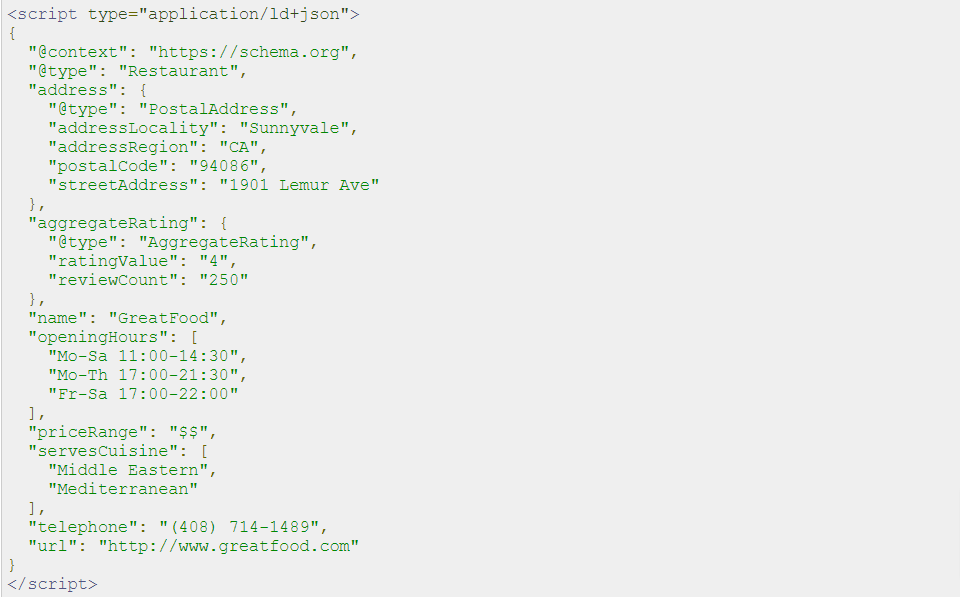
- Article: Ideal for news publishers and bloggers to provide key details like the article’s headline, author, and publishing date.

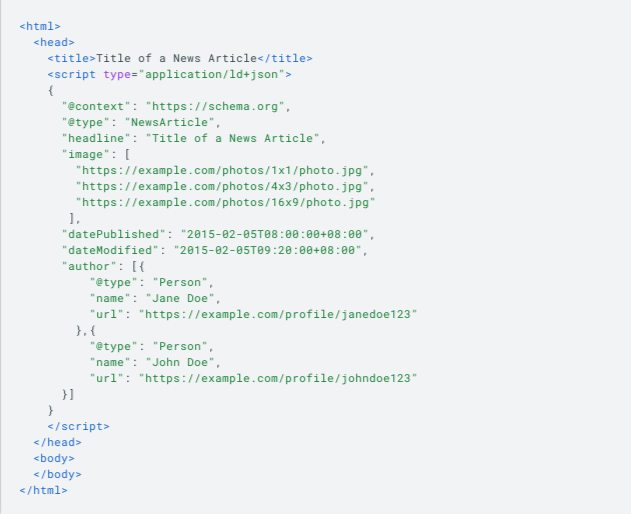
- Product: Essential for e-commerce websites, enabling you to highlight product information such as price, availability, and reviews.
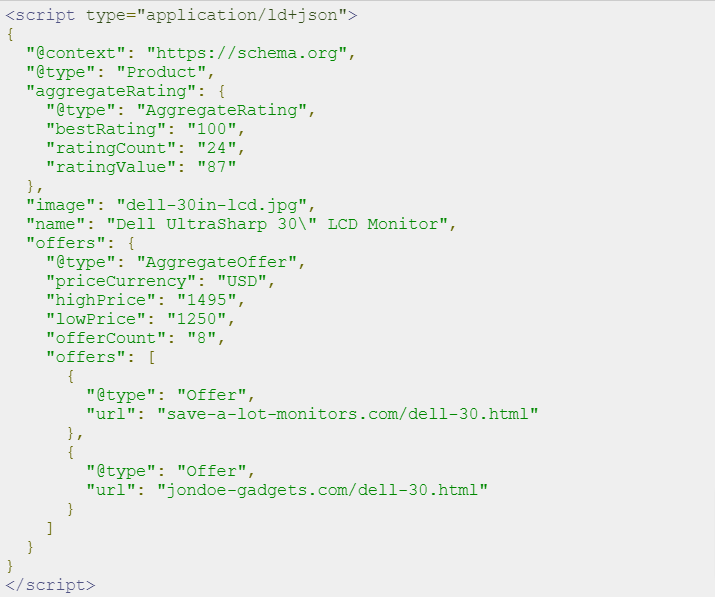
- Review: Allows you to display star ratings and reviews for products, services, or businesses, adding credibility and enticing potential customers.
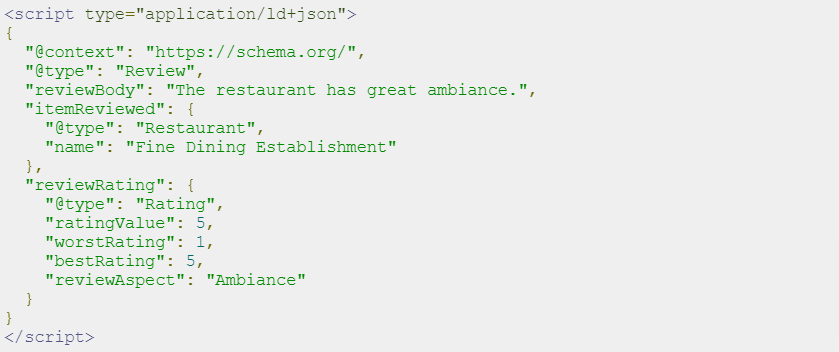
- Event: Helps promote upcoming events by showcasing relevant details like date, time, location, and ticket availability.
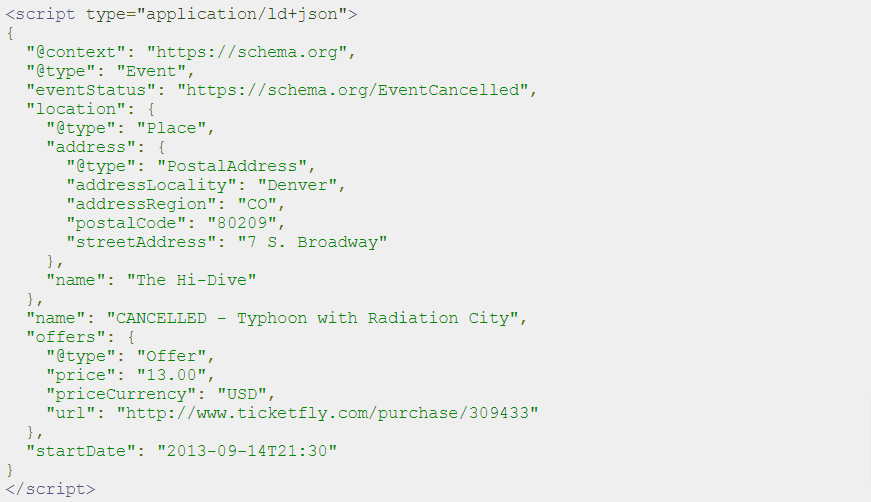
- FAQ: Enables you to answer frequently asked questions directly in the search results, improving user experience and encouraging click-throughs.
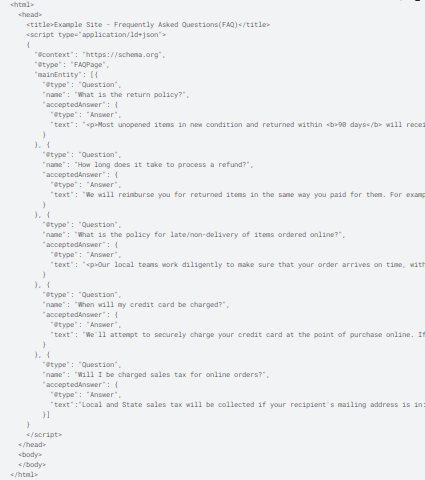
- Breadcrumb: Breadcrumb schema markup is structured data that enhances the visibility and user experience of your website by providing search engines with information about the hierarchical structure and navigation path. It helps generate breadcrumb trails in search results, guiding users and improving SEO performance.

These are just a few examples of the vast structured data options available for optimizing your website’s ranking in Google. You can choose the schemas that align with your content and business goals to maximize the benefits of schema markup and improve your ranking in Google’s search results.
How Schema Markup Influences SEO
Now that we understand the importance of schema markup, let’s explore how it directly impacts your SEO efforts. Structured data provides search engines with structured data, allowing them to better understand and interpret your content. This understanding can lead to improved search engine rankings, as search engines reward websites that make it easier for them to crawl and comprehend content.
Additionally, schema markup enhances the visibility of your website in SERPs, as mentioned earlier. Appearing in rich snippets, knowledge panels, and other enhanced search features can significantly increase your website’s visibility and credibility. These enhanced listings draw more attention from users and often result in higher click-through rates.
The Connection between Schema Markup and Rich Snippets
Rich snippets are the search results listings that display additional information, such as star ratings, images, and other details, beyond the standard title and meta description. Structured data is the key to unlocking these visually appealing and informative snippets. By implementing the appropriate schema types, you increase the chances of your website appearing in rich snippets and catching the eye of potential visitors.
Rich snippets not only make your listings stand out but also provide users with valuable information at a glance. This encourages them to click through to your website, increasing the likelihood of conversions. So, harnessing the power of schema markup is a surefire way to maximize the impact of your SEO efforts.
5 Steps Implement Schema Markup on Your Website
Now that you’re eager to leverage structured data for your website, let’s delve into how you can implement it effectively. Here’s a step-by-step guide to get you started:
- Step 1: Identify relevant schema types: Analyze your website’s content and determine which schema types align with your pages and goals.
- Step 2: Understand schema syntax: Familiarize yourself with the schema.org documentation and learn how to structure the structured Data correctly.
- Step 3: Add schema markup to your HTML: Insert the appropriate schema tags into your website’s HTML code. You can manually add the markup or use plugins or tools designed for schema implementation.
- Step 4: Test and validate: Utilize tools like Google’s Structured Data Testing Tool to ensure your structured data is error-free and properly interpreted by search engines.
- Step 5: Monitor and adjust: Regularly monitor your website’s performance and make adjustments to your schema markup as needed. Stay up to date with schema changes and adapt accordingly.
Best Practices for Using Schema Markup
To make the most of schema markup, follow these best practices:
- Start with high-impact pages: Begin implementing structured data on pages that are most likely to benefit from rich snippets and enhanced search features, such as product pages or service offerings.
- Be accurate and specific: Provide accurate and specific information in your structured Data. Avoid generic or vague descriptions, as they may not yield the desired results.
- Stay within guidelines: Adhere to the guidelines provided by schema.org and search engines. Using inappropriate schema types or misleading information can have negative consequences on your SEO efforts.
- Don’t overdo it: Use structured data judiciously. Adding markup to every single element on your website can be overwhelming and dilute the impact of the markup.
Common Mistakes in Using Schema Markup
While structured data is a powerful SEO tool, it’s important to avoid common mistakes that can hinder its effectiveness. Here are some pitfalls to watch out for:
- Incorrect implementation: Improperly structured can lead to errors or misinterpretation by search engines. Always double-check your markup for syntax accuracy and validity.
- Misleading information: Providing inaccurate or misleading information in your schema markup can harm your website’s credibility and lead to penalties from search engines. Ensure that the schema data aligns with the actual content on your pages.
- Neglecting updates: Stay informed about changes and updates to schema types and guidelines. Failure to update your structured data accordingly may result in outdated or incorrect information being displayed in search results.
Step-by-Step Guide to Implementing Schema Markup
Let’s now walk through a step-by-step guide to help you implement schema markup effectively:
Step 1: Research schema types: Identify the schema types that best suit your content and business objectives.
Step 2: Study schema.org documentation: Familiarize yourself with the relevant schema types and their properties. Understand how to structure the markup correctly.
Step 3: Choose implementation method: Decide whether you’ll add structured data manually or use plugins or tools to simplify the process. Select the method that aligns with your technical capabilities and website platform.
Step 4: Add markup to webpages: Insert the appropriate schema tags into your HTML code. Ensure that the markup is placed in the relevant sections and accurately describes the content.
Step 5: Validate the markup: Use tools like Google’s Structured Data Testing Tool or Rich Results Test to validate your structured data. Address any errors or warnings that arise.
Steps to Implement Schema Markup on your WordPress Website
| Step | Description |
| 1. | Choose a schema plugin for WordPress, such as Yoast SEO, Schema Pro, or All in One Schema Rich Snippets. |
| 2. | Install and activate the chosen schema plugin from the WordPress dashboard. |
| 3. | Configure the plugin settings by navigating to the plugin’s settings page. Specify default settings, such as the schema types you want to implement across your website. |
| 4. | Customize schema markup for individual pages or posts, if desired. Most schema plugins provide options to override the default settings on a per-page basis. |
| 5. | Create or edit a page or post in WordPress. Look for the structured data options provided by the plugin. This may be in the form of additional fields or settings within the page or post editor. |
| 6. | Enter the relevant schema information for the page or post. This may include details like the article title, author, date, product information, or event details, depending on the schema type and your content. |
| 7. | Save or update the page or post to apply the schema markup. |
| 8. | Repeat steps 5-7 for other pages or posts where you want to implement schema markup. |
| 9. | Validate your schema markup using tools like Google’s Structured Data Testing Tool or Rich Results Test. This ensures that your structured data is error-free and properly interpreted by search engines. |
| 10. | Monitor your website’s performance and make adjustments to the schema markup as needed. Stay informed about updates to the plugin and schema.org guidelines to ensure your schema markup remains accurate and up to date. |
Do’s and Don’ts of Using Schema Markup
To make the most of schema markup, keep these do’s and don’ts in mind:

Guidelines for Successful Schema Markup Application
To ensure successful schema markup implementation, consider these guidelines:
- Follow best practices: Adhere to best practices for structured data, including accuracy, specificity, and relevance.
- Use multiple schemas when applicable: Don’t limit yourself to a single schema type. Combine relevant schema types to provide search engines with a comprehensive understanding of your content.
- Optimize for mobile: As mobile usage continues to rise, ensure that your schema markup is optimized for mobile devices. This includes considering mobile-friendly designs, responsive layouts, and fast loading times.
- Leverage JSON-LD format: JSON-LD (JavaScript Object Notation for Linked Data) is the recommended format for structured data. It provides a clean and flexible way to incorporate structured data into your website.
- Stay updated with changes: Keep an eye on schema.org updates and changes to schema types. Implement any updates to stay current and maximize the benefits of structured data.
Further Resources and Learning Opportunities
Ready to take your schema markup knowledge to the next level? Here are some valuable resources and learning opportunities to explore:
- Schema.org: Visit the official website of schema.org for comprehensive documentation, examples, and updates on schema markup.
- Google’s Structured Data Testing Tool: Use this tool to test and validate your schema markup and troubleshoot any issues.
- Online courses and tutorials: Seek out online courses and tutorials that offer in-depth training on schema markup and its implementation. Platforms like Udemy and Coursera often feature SEO-related courses.
- SEO blogs and forums: Stay connected with the SEO community through blogs and forums. Engage in discussions, ask questions, and learn from industry experts.
Remember, at Web Zodiac, we’re always here to guide you through the intricacies of website development and SEO. Maximize your SEO potential by unleashing the power of schema markup.
In the end, as you venture into the world of structured data, take advantage of the resources and learning opportunities available to deepen your understanding. Explore schema.org for comprehensive documentation, use tools like Google’s Structured Data Testing Tool for validation, and consider online courses and forums to expand your knowledge.
Lastly, staying updated with industry news and blogs will keep you abreast of the latest advancements in structured data and SEO practices. Follow reputable SEO blogs and subscribe to newsletters that deliver valuable insights straight to your inbox.
I’m here for you, simplicity is key. Schema markup may sound daunting, but with the right approach, it can be a straightforward and effective way for Web Zodiac, your trusted brand, to elevate your website’s visibility, attract more visitors, and ultimately achieve your business goals. Embrace structured data and unleash its full potential in maximizing your SEO success with Web Zodiac by your side. Happy optimizing!


0 Comments